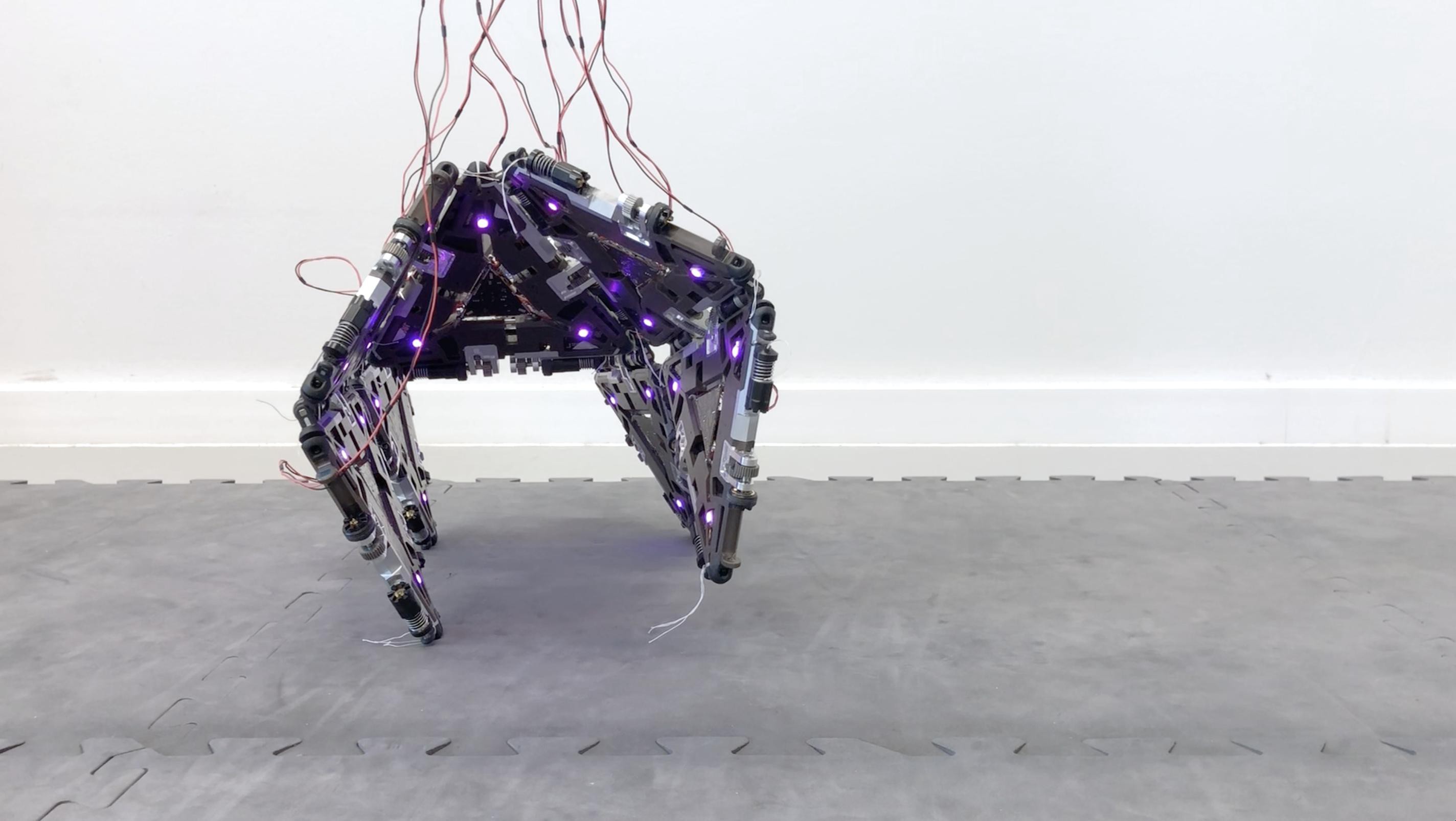依附理論系列
前一篇文章〈依附傾向:我對你的依附沒有絕對分類〉當中提到了一些關於近代依附研究的基礎概念,這一篇則要開始深入地探討近年來依附理論的研究結果。我將先簡單介紹一下三種依附型態對於安全感的看法,接著再談談安全型依附者的眼中,看到的是一個怎麼樣的世界?

安全感:依附類型形成的關鍵
安全依附,顧名思義地,就是充滿了穩固的安全感。而穩固的安全感,對於一個人能不能夠順利發展自己的人格、健全的心理功能,以及能不能夠調適好自己,順利地適應這個社會等,都是很重要的關鍵[1]。但是,並不是每個人都能夠在成長過程中獲得穩固的安全感,有些人在成長過程中,可能時常被父母親冷落,或是經歷了同儕的排擠,使得他們很難獲得穩定的安全感,而這些人就有可能發展成為不安全型依附。
如同前兩篇文章所提到的,最常見的兩種不安全型依附為焦慮型依附與逃避型依附(矛盾型 / 紊亂型依附較為少見),其中焦慮型依附的人,因為他們擔心自己沒能獲得他人的愛,因此會積極地嘗試去尋求他人的愛與支持;但同時又擔心他人沒辦法滿足自己的需求,因此會變得很焦慮;當他們的需求真的沒能被他人所提供時,他們會感到生氣與失望[2],覺得自己果然是不值得被愛的,或是對於他人不能滿足自己的需求而氣憤不已。
而為什麼焦慮型依附的人會如此焦慮呢?那是因為,他們所依附的對象,有時會給予回應,但有時又不給予回應。試著想像你是一個小嬰兒,你的媽媽在你需要喝牛奶的時候,有時會給你牛奶喝,但有時卻放任你在那邊哭鬧也不理你,那麼你一定會覺得很難受吧!但是有時候你的哭鬧又能喚起媽媽的注意,因此你總會不斷地哭鬧,直到媽媽注意到你的需求為止。在一段愛情關係當中,當你的伴侶未能滿足你的期待時,你也開始一哭二鬧三上吊,企圖用更強烈的手段來喚起伴侶的注意,雖然有時候會成功,但是當那伴侶無法滿足你需求的時候,你便會感到痛心疾首,開始懷疑對方是不是不再愛你了。
有另外一群人,他們乾脆放棄索求幸福的可能,當他們在關係受到威脅時,索性不和他人親近,同時也否認自己的脆弱與需求,把心門關得緊緊的,儘管內心躺著血,但外在卻裝作一副我不在乎的樣子,藉此逃避受傷、被忽略的可能。「只要不要期待,就不會受傷害了。」他們總是這麼告訴自己。這一群人,就是所謂的逃避型依附者。

在說完了安全感對依附類型的影響之後,接下來,我要談談安全依附者的內心世界:當一個人充滿安全感的時候,他的內心世界會呈現什麼模樣呢?
安全依附者的心理世界
如果我們每個人的心理,都有一個想像的世界,那麼安全依附者的世界裡,到底存在著哪些景色呢?過去的研究發現,如果有一個人,想像自己在遇到困難時,總是能夠找到適當的方式來幫助自己,那麼他就會喚起心中那些「這個世界是如此地溫暖而美好」的想法,就好像在《腦筋急轉彎》這部電影當中,小女孩的心中有一個美好的「家庭島」一般,安全依附者的心中,也會有這樣一個「美麗世界島」[1][3]。對於這個美麗世界島,而我們又會用兩種不同的方式來描繪它──陳述性記憶(declarative)與程序性記憶(procedural)。
學過一些心理學的人,應該對這兩種記憶並不陌生。陳述性記憶指的是那些我們可以描述出來的記憶,例如:「台灣的首都在台北」;而程序性記憶則是那些我們親身去做某件事情的時候,身體所儲存的運動記憶,例如「球來就打」、「騎腳踏車」、「彈鋼琴」等等,如果你今天去採訪王建民,問他到底怎麼把球投進好球帶的,他一定很難跟你描述,恩,沒錯,程序性記憶指得就是這些難以用文字具體描述的肢體行為。
那麼,我們又是用什麼方式來描述這個美麗世界島的呢?當你問一個活在美麗世界島的居民,這個世界是一個怎麼樣的世界時,他會跟你說,「這個世界是很美好的」、「我是一個有價值的人」等等這些對自己的價值(worth)、技術(skill)、能力(ability)帶著正面信念的陳述,他們通常會認為自己有能力來掌控生活中的問題,同時對他人的好意帶著正面的看法,而這些就是所謂「具有安全感的陳述性知識」。
而程序性知識呢?當一個美麗世界島的居民,碰到生活中的困境時,由於他們相信自己是有價值的,別人也能夠適時地如小叮噹一般伸出圓(援)手;因此他們在面對困境時,能夠正向地承接住問題,適時地尋求他人的幫助,進而解決問題;而非只是枯坐在那裡自艾自憐、反芻(ruminating)自己遭遇到的挑戰[4]。安全型依附的人,透過這兩種看待世界的方式,在他們的心中,建立起一座充滿安全感的安全堡壘(secure base)[5]。

總結來說,如果你是一個安全型的人,那麼當你遇到壓力事件的時候,你會比較能夠審慎地去評估壓力,並且比較能夠相信自己有能力來應付壓力事件[6][7]、在自己有需求時比較能夠去求助[8],不論是受試者自己回報面對壓力事件的方式[9],或是在生活情境中以及實驗室情境中的壓力事件研究[10][11],都得到了這樣的結果;因為安全型的人,總是能夠用有建設性的方式來面對問題,把焦點聚焦在如何解決問題本身(problem-focused coping),而不是採取無用的方來應付壓力[12][13]。
除此之外,你也會對於人類的本質帶著較為正向的看法[14] [15]、採用比較正向特質的詞彙來描述你的關係伴侶[16][17]、對伴侶的行為帶著更正向的期待[18][19][20];同時,當伴侶做出讓你反感的行為時,你也會用比較正向的解釋來看待它[21][22],例如你的伴侶在約會時姍姍來遲,你可能會解讀為他最近在趕報告很累,所以睡得比較晚,而不是它不夠愛你等等。安全型依附對自己的正向看法,也展現在其他各種面向上,例如,他們有較高的自尊[23][24]、把自己看作有能力的人[25][26]、用較為正向的詞彙描述自己[27]等等。正因為他們的這些特質,因此他們比起不安全依附的人,更相信自己能夠建立一段穩固的愛情[1]。
依附理論系列:
延伸閱讀
- [1] Mikulincer, M., & Shaver, P. R. (2007a). Attachment in adulthood: Structure, dynamics, and change. New York: Guilford Press.
- [2] Cassidy, J., and Kobak, R. (1988). Avoidance and its relation to other defensive processes. In J. Belsky and T. Neworski (Eds.), Clinical implications of attachment Erlbaum, Hillsdale, NJ, pp. 300-323.
- [3] Mikulincer, Mario&Shaver, Phillip R.(2003)Attachment theory and affect regulation: The dynamics, development, and cognitive consequences of attachment-related strategies.
- [4] Epstein & Mercier(1989).Constructive thinking: A board coping variable with specific components. Journal of personality and social psychology,57,332-350.
- [5] HARRIET S. WATERS & EVERETT WATERS(2006) The attachment working models concept: Among other things, we build script-like representations of secure base experiences. Attachment & Human Development, September 2006; 8(3): 185 – 197
- [6] Berant, Mikulincer & Florian(2001) The association of mother’s attachment style and their psychological reactions to the diagnosis of infant’s congenital heart disease. Journal of Social and Clinical Psychology,20,208-232
- [7] Radecki-Bush, C., Farrell, A.D., & Bush, J.P. (1993). Predicting jealous response: The influence of adult attachment and depression on threat appraisal. Journal of Social and Personal Relationships, 10, 569–588.
- [8] Larose, Bernier ,Soucy, & Duchesne(1999).Attachment style dimensions, network orientation, and the process of seeking help from college teachers. Journal of Social and Personal Relationships,16,225-247
- [9]Berant,E. Mikulincer,M., & Florian, V. (2001).The association of mothers’ attachment style and their psychological reactions to the diagnosis of infant’s congential heart disease. Journal of social and clinical Psychology,20,208-222.
- [10] Fraley, R. C., & Shaver, P. R. (1998). Airport separations: A naturalistic study of adult attachment dynamics in separating couples. Journal of Personality and Social Psychology, 75, 1198-1212.
- [11] Simpson, Jeffry A.; Rholes, William S.; Nelligan, Julia S.(1992) Support seeking and support giving within couples in an anxiety-provoking situation: The role of attachment styles. Journal of Personality and Social Psychology, Vol 62(3), 434-446.
- [12] Lussier, Y., Sabourin, S., & Turgeon, C. (1997). Coping strategies as moderators of the relationship between attachment and marital adjustment. Journal of Personal and Social Relationships, 14, 777–791.
- [13] Mikulincer, M., & Florian, V. (1998). The relationship between adult attachment styles and emotional and cognitive reactions to stressful events. In Simpson, J., & Rholes, S. (eds.,) Attachment theory and close relationships (pp. 143-165). New York: Guilford.
- [14] Nancy L. Collins and Stephen J. Read(1990) Adult Attachment, Working Models, and Relationship Quality in Dating Couples. Journal of Personality and Social Psychology 1990, Vol. 58, No. 4, 644-663.
- [15] Hazan, C. & Shaver, P. (1987) Romantic Love conceptualized as an attachment process. Journal of Personality and Social Psychology, 52(3), 511-524.
- [16] Feeney, J. A., & Noller, P. (1991). Attachment style and verbal descriptions of romantic partners. Journal of Social and Personal Relationships, 8, 187-215.
- [17] Levy, Blatt ,& Shaver(1998) Attachment Styles and Parental Representations. Journal of Personality and Social Psychology. Vol. 74, No. 2, 407-419.
- [18] Baldwin, M. W., Fehr, B., Keedian, E., Seidel, M., & Thomson, D. W. ( 1993 ). An exploration of the relational schemata underlying attachment styles: Self-report and lexical decision approaches. Personality and Social Psychology Bulletin, 19, 746-754.
- [19] Baldwin, M. W., Keelan, J. P. R., Fehr, B., Enns, V. & Koh- Rangarajoo, E. (1996). Social cognitive conceptualization of attachment styles: Availability and accessibility effects. Journal of Personality and Social Psychology, 71, 94-109.
- [20] Mikulincer, M., & Arad, D. (1999). Attachment working models and cognitive openness in close relationships: A test of chronic and temporary accessibility effects. Journal of Personality and Social Psychology, 77, 710-725.
- [21] Collins, N. L. (1996). Working models of attachment: Implications for explanation, emotion, and behavior. Journal of Personality and Social Psychology, 71, 810-832.
- [22] Mikulincer, M. (1998). Attachment working models and the sense of trust: An exploration of interaction goals and affect regulation. Journal of Personality and Social Psychology, 74, 1209-1224.
- [23] Bartholomew, K. & Horowitz, L. M. (1991). Attachment styles among young adults: A test of a fourcategory model. Journal of Personality and Social Psychology, 61, 226-244.
- [24]Mickelson, Kessler, & Shaver(1997) Adult attachment in a nationally representative sample. Nov;73(5):1092-106.
- [25] Brennan, K. A., & Morris, K. A. (1997). Attachment styles, self-esteem, and patterns of seeking feedback from romantic partners. Personality and Social Psychology Bulletin, 23, 23-31.
- [26]Cooper, Shaver& Collins(1998) Attachment styles, emotion regulation, and adjustment in adolescence. 74(5):1380-97.
- [27] Mikulincer (1995)Attachment style and the mental representation of the self. Journal of Personality and Social Psychology 69 (6), 1203













































